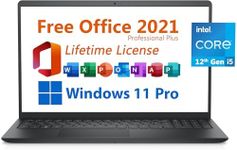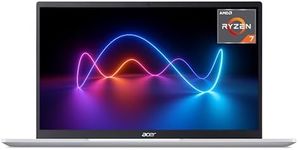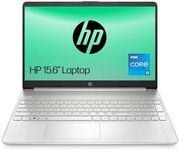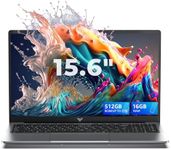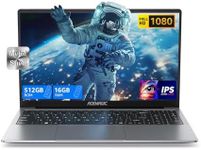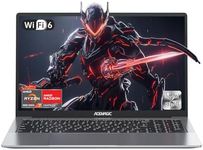Buying Guide for the Best Laptops For Senior Citizens
Choosing the right laptop for senior citizens involves considering ease of use, comfort, and the specific needs of the user. Seniors may prioritize features like a clear display, simple interface, and reliable performance. It's important to focus on aspects that enhance usability and accessibility, ensuring the laptop is a helpful tool rather than a source of frustration. Here are some key specifications to consider when selecting a laptop for a senior citizen.Display Size and QualityThe display size and quality are crucial for seniors, as they can affect readability and overall comfort. Larger screens, typically 15 inches or more, are easier on the eyes and can display text and images more clearly. High-resolution screens (Full HD or higher) provide sharper images and text, reducing eye strain. If the user has vision issues, a larger, high-quality display can make a significant difference in their experience.
Keyboard and TouchpadA comfortable keyboard and responsive touchpad are essential for ease of use. Look for laptops with well-spaced, backlit keys that are easy to see and press. A larger touchpad can also make navigation simpler. Seniors with arthritis or dexterity issues may benefit from ergonomic designs and additional input options like a touchscreen.
Operating SystemThe operating system (OS) determines the user interface and available software. Windows, macOS, and Chrome OS are the most common options. Windows offers a wide range of software and customization, macOS is known for its user-friendly interface and integration with other Apple devices, and Chrome OS is simple and secure, ideal for basic tasks like browsing and email. Choose an OS that the user is comfortable with or willing to learn.
Performance (Processor and RAM)Performance is determined by the processor (CPU) and memory (RAM). For basic tasks like web browsing, video calls, and word processing, an entry-level processor (like Intel Core i3 or AMD Ryzen 3) and 4-8GB of RAM are sufficient. For more demanding tasks, such as photo editing or multitasking, a mid-range processor (Intel Core i5 or AMD Ryzen 5) and 8-16GB of RAM are recommended. Consider the user's typical activities to choose the right performance level.
Battery LifeBattery life is important for portability and convenience. A laptop with a longer battery life (8 hours or more) allows seniors to use it throughout the day without needing to recharge frequently. This is especially useful for those who like to move around the house or use the laptop in different locations.
Weight and PortabilityA lightweight and portable laptop is easier to handle and carry around. Laptops weighing around 3 pounds or less are ideal for seniors who may have difficulty lifting heavier devices. Portability is also important for those who travel or like to use their laptop in various places around the home.
Connectivity OptionsConnectivity options like USB ports, HDMI, and Wi-Fi are essential for connecting peripherals and accessing the internet. Ensure the laptop has enough ports for the user's needs, such as connecting a mouse, external keyboard, or printer. Built-in Wi-Fi and Bluetooth are also important for wireless connectivity.
Ease of Use FeaturesLook for laptops with features that enhance ease of use, such as voice assistants (like Siri or Cortana), large icons, and simplified settings. Some laptops offer accessibility options like screen readers, magnifiers, and high-contrast modes, which can be very helpful for seniors with vision or hearing impairments.
Support and WarrantyGood customer support and a reliable warranty are important for peace of mind. Look for laptops from manufacturers that offer robust customer service, easy access to help, and comprehensive warranties. This ensures that any issues can be resolved quickly and efficiently, reducing stress for the user.
